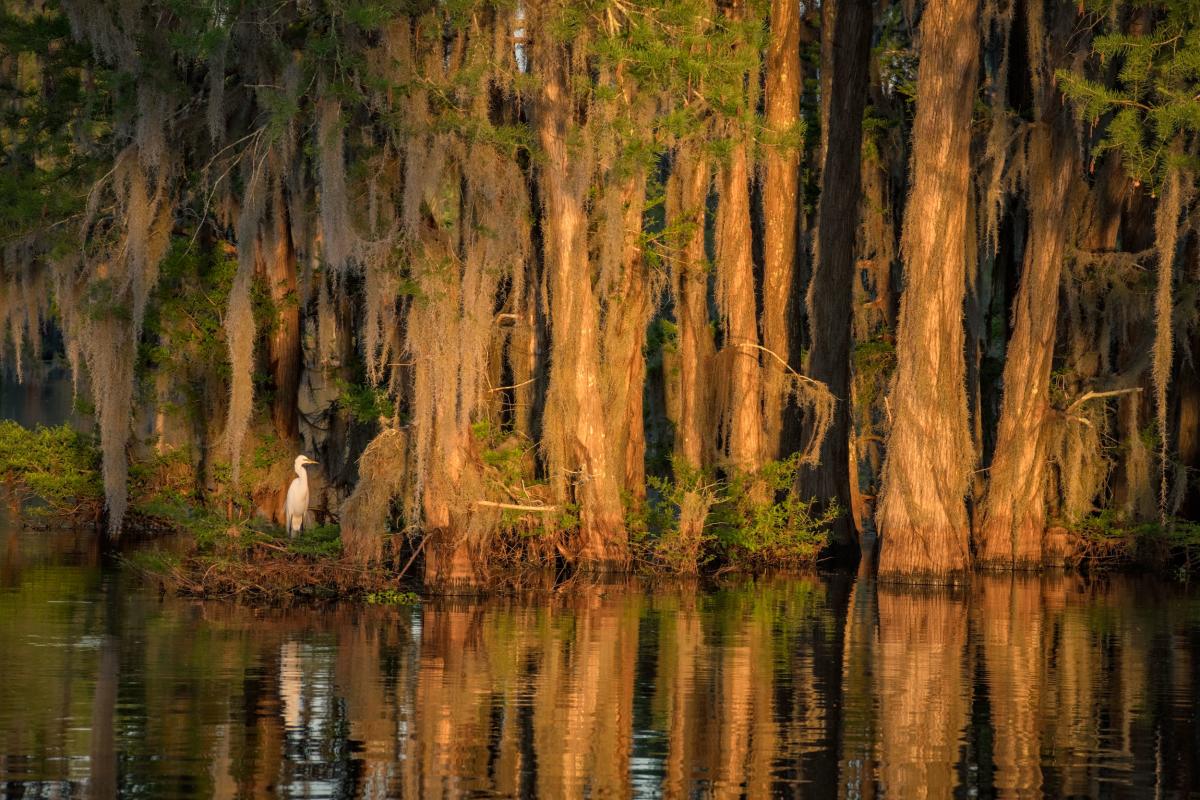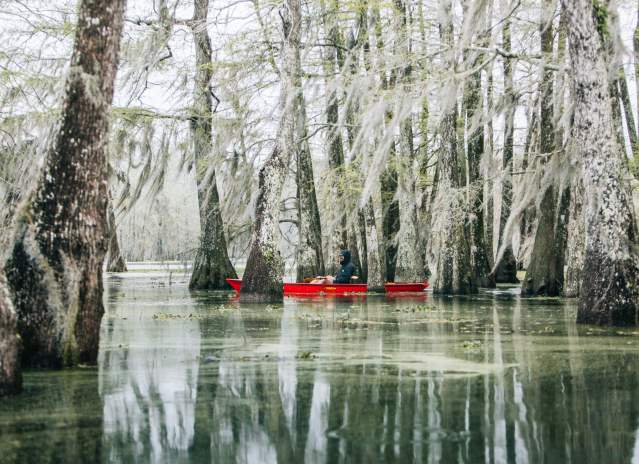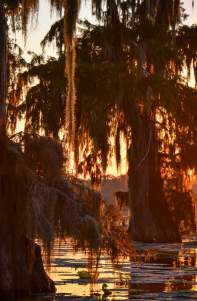Your browser is not supported for this experience.
We recommend using Chrome, Firefox, Edge, or Safari.
The Atchafalaya
The Atchafalaya Basin comprises an area of 860,000 acres of swamps, lakes and water prairies. Cutting a 15-mile-wide path across South Louisiana, it is the largest and last great river-basin swamp. But to fully comprehend and appreciate the magnificence of the Atchafalaya, you must journey back to when the Atchafalaya was as nomadic as its people.

The Atchafalaya River Basin first began forming around 900 AD when the mighty Mississippi River abandoned its easternmost channel and flowed in that direction for approximately 1,000 years to occupy the present course of Bayou Lafourche. Over time, natural levees formed along the river to trap yearly overflow thus forming a lake within the middle bounded by a densely forested area.
The Atchafalaya was a lifeline for its inhabitants beginning with the early arrival of the Acadians, more commonly known as the "Cajuns." Exiled in 1755 from their home in Nova Scotia, Canada, this French-speaking tribe wandered aimlessly along the Atlantic Seaboard for years seeking refuge as well as loved ones lost to them through the exile known as "Le Grand Derangement." After years of searching, some of the survivors established roots and a heritage in the rich, fertile soils of the Atchafalaya Basin.
After their abusive exile and vagrant journey to Acadiana, the Cajuns did not mingle, but remained as a close knit community remaining shut off from a society entering into industrialization. In what was once a virtually isolated area where the way of life was ruled by custom and tradition, industrialized man conquered and disrupted this isolation.

In the 1920's, oil and gas was discovered in the basin producing an influx of newcomers. With the completion of an 18-mile-long bridge on Interstate 10 in 1973, Acadiana was finally linked with the rest of the state. The Great Flood of 1927 drastically changed life in the Basin from Simmesport in the upper Basin to Morgan City in the South. The flood triggered a mass exodus from communities like Bayou Chene, Sherburne, Atchafalaya and Pelba where people once made their living from the swamp.
In an effort to control Mother Nature's plans of shortening the route of the Mississippi River to the Gulf of Mexico via the Atchafalaya River, the U.S. Army Corps of Engineers erected huge flood gates at the intersection of the two rivers. The Corps of Engineers created the five-mile-wide West Atchafalaya Floodway as an outlet for the raging water of the Red, Atchafalaya and Mississippi rivers during the next great flood.

An abundance of wildlife can be found in the Basin. At least 300 species of birds including thousands of wintering ducks and coots and the largest wintering population of American woodcock in North America. Over 50,000 egrets, ibises and herons nest in the Floodway. The largest nesting concentration of bald eagles in the south central United States is found in the Atchafalaya Basin. The American alligator along with 65 other species of reptiles and amphibians can also be found. Over 90 species of fish, crawfish, crabs and shrimp support an extremely active seafood industry. Based on a survey conducted by the Corps of Engineers and the Louisiana Department of Wildlife and Fisheries, the value of the Floodway's fish, wildlife and related recreational resources has been estimated at approximately $97 million annually.
With each new season, the Atchafalaya Swamp changes its face. Winter blows in isolation and despair as the frigid morning fog rolls across the basin swamp. Spring signals a rebirth as lush greens and vibrant purples reach forward to embrace its new season. Sunrise in the basin awakens its creatures as snakes slither, and alligators and turtles bask in the sunlight. As the sun descends on another day, an eerie silence hangs on until the haunting cry of the egret penetrates the morning.
Places to Explore
Inspiration Journal
Lafayette's blog showcasing the food, music, culture and history at the heart of Cajun & Creole Country.
See All PostsFarmers Markets in Acadiana
Farmers markets in Lafayette and the surrounding areas offer a vibrant glimpse into the region's rich agricultural traditions and cultural diversity. From the fields of the…
Lafayette Weekly
A weekly curated playlist by local musician Philippe Billeaudeaux featuring music by Lafayette, LA musicians with a weekly rundown of live music happening in and around the area…
Cajun Music
Cajun music is a central component and marker of Cajun identity and culture in southwestern Louisiana. Largely accordion and fiddle-based and primarily sung in vernacular French…
Cajun & Creole Instruments: Accordion
A relatively recent invention, the bellows-driven, vibrating reed squeezebox known as the accordion, was first manufactured in Germany and later in Russia in the 1820s. It is…
Getting to Lafayette
The city of Lafayette, LA is located in the center of Lafayette Parish at the intersection of I-10 and I-49 between New Orleans and Houston and only 35 miles north of the Gulf of Mexico.











